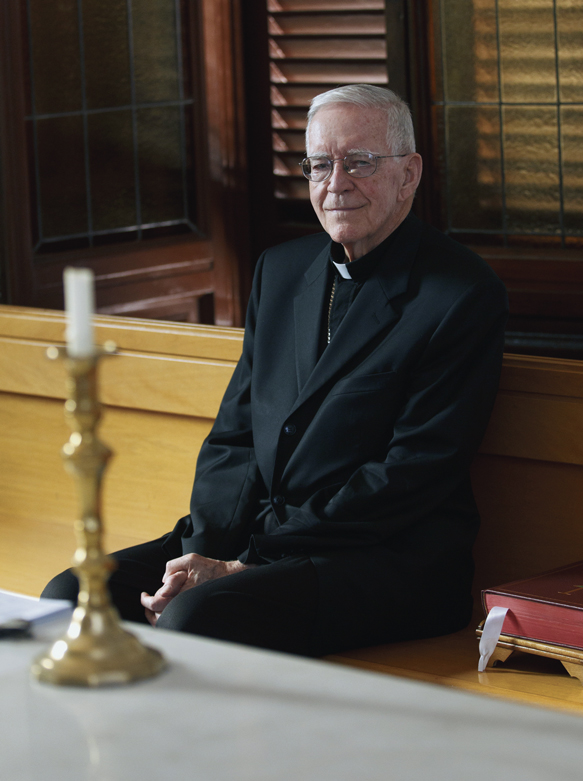by Francis X. Rocca

VATICAN CITY (CNS) – It was Oct. 11, 1962, and the bishop of Inchon, Korea, was walking in a procession of more than 2,200 other bishops into St. Peter’s Basilica on the opening day of the Second Vatican Council.
“Every light was on in the basilica because of television,” he said. “Literally, my mouth dropped as I walked in and looked up. Because I was used to little tiny chapels, small churches in Korea. This was unbelievable.
“I thought I was at the gate of heaven,” said Bishop William J. McNaughton, speaking about his first visit to Rome.
Fifty years to the day, the U.S.-born bishop was back, one of 15 Council Fathers – out of the 70 still alive – who made it to an outdoor Mass in St. Peter’s Square marking the golden anniversary of that momentous event.
Bishop McNaughton, 85, attended all four sessions of Vatican II from 1962 to 1965, missing only two days because of illness.
He said the council’s “greatest highlight” was the approval of “Lumen Gentium,” the Dogmatic Constitution on the Church, “a magnificent document” that dedicates an entire chapter to the subject of the “people of God.”
That term has sometimes been interpreted as a reference to the laity, the bishop said, but a reading of the constitution should make it clear that it refers to everyone in the Church, including the pope and the bishops.
Bishop McNaughton speaks with regret of other instances of ignorance or misunderstanding of the documents of Vatican II.
The Constitution on the Sacred Liturgy, “Sacrosanctum Concilium,” authorized moving the tabernacle that houses the Eucharist to a separate devotional chapel, he said, but many pastors simply shunted it off to the side of the main sanctuary.
“I thought that was a big mistake,” the bishop said. “People today do not have a full understanding of what the tabernacle means, and it’s that Christ is present in the Eucharist in the tabernacle.”
The same document called for fewer statues in churches, but some authorities “just removed all statues and put our Blessed Mother’s statue out in a corridor, or out in the lobby,” he said. “It was obvious they were not reading this document.”
“Perfectae Caritatis,” the Decree on the Appropriate Renewal of the Religious Life, directed religious women to modify their habits according to the “circumstances of time and place and to the needs of the ministry involved.”
“It didn’t say that the habits would be removed, and I think that was a big mistake,” the bishop said.
To correct and prevent such misunderstandings, the bishop enthusiastically endorses Pope Benedict’s call for Catholics to reread the council documents as part of their observance of the Year of Faith, which opened with the Oct. 11 anniversary Mass.
The bishop also agrees with Pope Benedict’s teaching, reiterated by the pope at an audience with the Council Fathers Oct. 12, that Vatican II must be understood in continuity with the Church’s millennial traditions, not as a radical break with the past.
“There’s no rupture in the documents of the Second Vatican Council with previous councils, the previous teaching of the church,” Bishop McNaughton said.
“Look at the footnotes,” he said. “There’s constant reference to the various ecumenical councils of the church … and also there’s a lot of reference to the fathers of the church. So it is a continuity.”
The bishop rejects arguments that the council was somehow to blame for the decline in Catholic observance and the rise of secularism.
Winning back that world for the church is the aim of the new evangelization, the subject of a three-week world Synod of Bishops that opened at the Vatican Oct. 7.
